The botanical world is rich in plant varieties, and Dendrobium Nobile is in great demand. This perennial plant belongs to the herbaceous family of orchids. The orchid has a second name: noble dendrobium. Thanks to the work of Japanese and Dutch breeders, hybrids are created that are suitable for growing home conditions. They differ from the original form in bright coloring of flowers and lush large inflorescences.
Content
External characteristics
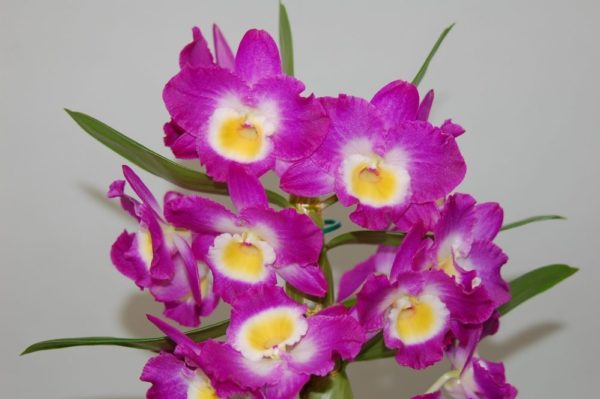 Class: monocotyledonous, subfamily: epidendra plants. The type of orchid is listed in the register of rare species. In the natural environment it grows in Thailand at an altitude of 600-1500m above sea level, which characterizes Nobile as a plant that prefers moist summer air. During winter, it harmoniously feels in places with dry air with relative coolness.
Class: monocotyledonous, subfamily: epidendra plants. The type of orchid is listed in the register of rare species. In the natural environment it grows in Thailand at an altitude of 600-1500m above sea level, which characterizes Nobile as a plant that prefers moist summer air. During winter, it harmoniously feels in places with dry air with relative coolness.
It can be found in India, China and Vietnam. In small quantities, Dendrobium grows in Laos, Nepal and the Himalayas.
Buds can be:
- purple, supplemented with yellow spots on the surface of the petals;
- pink;
- white, can be complemented by the lilac color of the tips of the petals;
- reds.
The stem is characterized by a cylindrical shape with a thickening in the lower part. The trunk is straight fleshy, has a glossy shimmer of greenery. The foliage of the plant is wide, green.
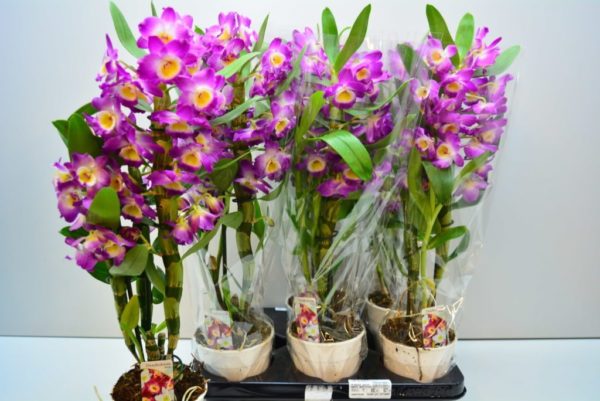 Inflorescences contain from 1 to 3 flowers. Their number depends on the age and variety of dendrobium. In total, one stalk contains 50-70 of the flowers. Each in diameter is from 5 to 9 cm. An ovoid petal against the background of elongated long sepals.
Inflorescences contain from 1 to 3 flowers. Their number depends on the age and variety of dendrobium. In total, one stalk contains 50-70 of the flowers. Each in diameter is from 5 to 9 cm. An ovoid petal against the background of elongated long sepals.
Dendrobium Nobile flower is unique in external indicators. The popularity of orchids explains its distribution in home gardens. There is a list of what is recommended to know when buying a plant in a nursery or from private breeders:
- By purchasing an adult plant, the buyer receives a beautiful blooming orchid, without fallen leaves, when it does not discard the color. This condition is partly false. It is explained by the use of drugs aimed at accelerating growth;
- Dendrobium Nobile at home is growing, but requires attention and care from the moment of delivery from the nursery.
Home Care
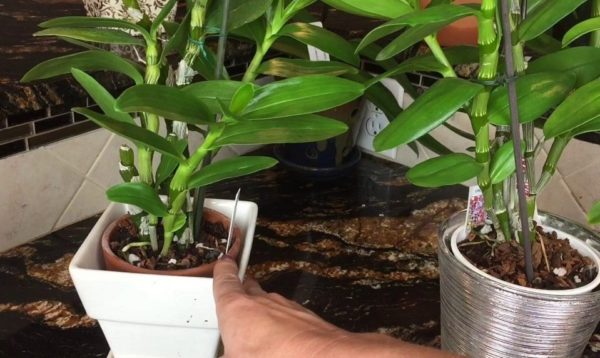 Bringing a new orchid flower into the house, whether it is the original look or hybrids (Dendrobium Nobile Song Bird, Dendrobium Nobile Kumiko), the owner takes responsibility for caring for the plant. Caring for a plant means events:
Bringing a new orchid flower into the house, whether it is the original look or hybrids (Dendrobium Nobile Song Bird, Dendrobium Nobile Kumiko), the owner takes responsibility for caring for the plant. Caring for a plant means events:
- Features of cultivation. Hybrids, like the original plant, have a life cycle that meets seasonality. Orchid cultivation is unique in each of the four periods and requires certain environmental conditions.
- Lighting and flower location. Flowers belonging to the genus of orchids require the presence of sunlight for 12 hours. The uniqueness of cultivation is a ban on direct sunlight. In this regard, it is recommended to exhibit potted plants from the Western or Eastern side.If you need to place Nobile on the south side of the house, a system of curtains or blinds should be thought out. This is to prevent burns on the plant. The correct choice of place is determined by the leaves. Darkening foliage indicates a lack of light, brightened leaves signal the danger of sunburn.
- Temperature. Temperature readings depend on the season and humidity. In the summer months, a temperature of 23 to 27 degrees will be considered comfortable. The winter period requires a reduction in heat to 19 degrees. Temperature affects the flowering of the plant. To stimulate the appearance of flowers, it is required to create an artificial temperature fluctuation of 6-8 degrees between daytime and nighttime readings.
- Watering the Dendrobium Nobile. The periods and intensity of irrigation is regulated by the indoor microclimate. The cutting speed of the substrate depends on it. In summer, at low humidity, watering Dendrobium may be required from 2 to 3 times in 7 days. In the spring and autumn months, as the humidity level rises, the amount of water consumed by the plant decreases. One watering is enough for one and a half to two weeks. According to experts, in the period between blooms, the intensity of irrigation must be reduced. Use filtered soft water at room temperature. In rare cases, pour boiled. To produce both in the classical way (adding liquid to the pallet), and by placing a pot with a plant in a basin with water.
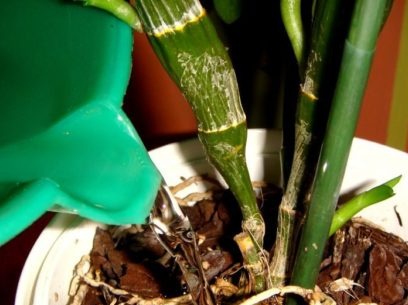
- Humidity. This is one of the important points for growing orchids. Nobile prefer air moistened to 40-50%. To maintain the desired rate, use spraying and wet stones, placed on the pallet of the flower pot.
- Priming. Transplanting an adult plant into a new “home” is an important action. To do this, use a special primer. If necessary, you can make the soil for the Dendrobium Nobile yourself. It is based on pine bark added to the soil. In order to improve drainage and prevent disease add charcoal.
- Transplanting and choosing a pot for Dendrobium Nobile. A transplant with roots is rare. The first time it is necessary to carry out 1-1.5 after the purchase of the plant, the subsequent movement of the orchid to a new land - every 3-4 years if necessary (the pot became small for the developed root system, the substrate became unusable, root diseases).
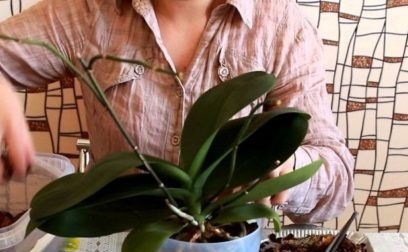
- Top dressing. Liquid fertilizers have been developed to fertilize the soil. Distribution of dressing takes place by spraying the leaves in 1/5 of the dose, or add to the pot pan at a dose of ½ of the recommended in the instructions. During the preparation of the plant for flowering, the use of fertilizers with a high phosphorus content is indicated.
- Pruning. Withered, dried parts are subject to circumcision. The process can be carried out only after flowering orchids. Trimming can be done in two ways. Partially shorten the flower stalk above the sleeping bud by 1-1.5 cm, or cut off at the base, leaving a “stump” up to 3 cm high. Important! The procedure is carried out by secateurs.
- The period of rest and preparation of the Dendrobium Nobile for flowering. An important stage is the rest period. Transfer the pot with orchid to a cool place with a temperature of no higher than 19 degrees. Gradually stop watering and top dressing. The return of the flower to its usual conditions occurs after the transformation of pseudobulbs into peduncles.
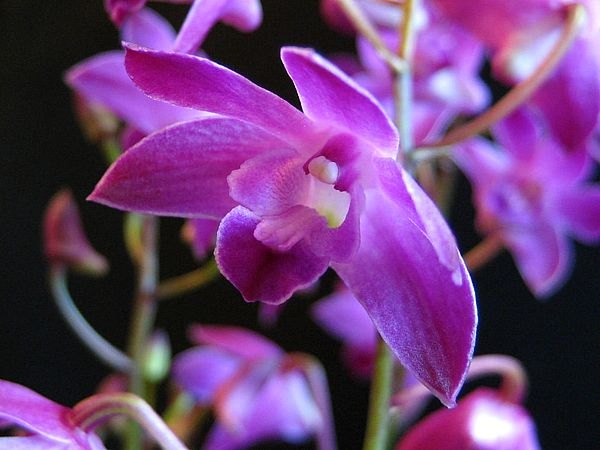 You may be interested in:
You may be interested in:Features of care and methods of reproduction
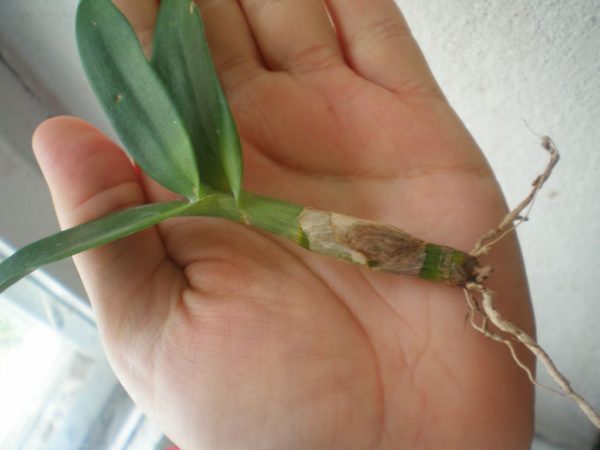 Rules for care during flowering:
Rules for care during flowering:
- Watering. Use warm water purified from impurities.
- Provide a sufficient level of illumination.
- For feeding during flowering, use fertilizers with a low nitrogen content and high phosphorus.
Caring for the Dendrobium Nobile after flowering is also required.The question often arises: if the Dendrobium Nobile orchid has bloomed, what should I do next? It is recommended to create conditions for the plant to begin the dormant period, when the flower restores strength and prepares for new flowering and reproduction.
After the decision to breed plants, the question arises of the method of reproduction. There are several of them:
- With the help of the kids. This is the name of the rosette formed on the pseudobulb instead of the flower. Advised to give "children" time to develop. After separation from the mother’s escape, 2 hours are given to “tighten” the cut. To do this, leave the outlet in the open. Treat the slice with crushed activated carbon. After treatment, the children of Dendrobium should be planted in a substrate. It is recommended to cover the pot or pot with a plastic bag. This will help create greenhouse conditions.
- Using cuttings. Prepare the planting material as follows: take a pseudobulb without leaves. Divide into several parts so that each has 2 to 3 kidneys. Cut the cuttings in a container with moss. The root system begins to form after 2.5-3 weeks. Transplant into a pot after the roots have managed to grow more than 5 cm in length. Propagation by cuttings is a long complex process.
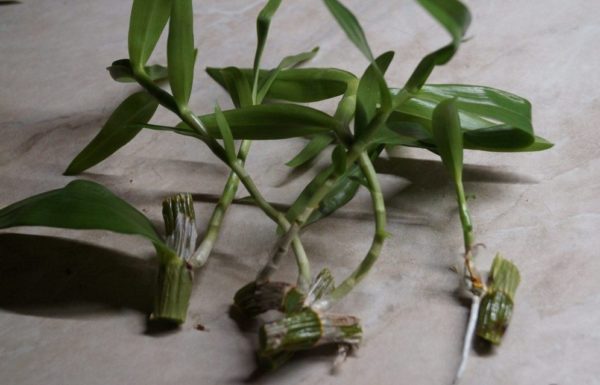
- Adult bush. Separate the sprout from the adult healthy plant with new and old pseudobulbs. Leave the separated link in air in a cool place for 24 hours. After a day, plant the plant in substate in order to grow a separate plant.
- You can plant using a young pseudobulb. For the formation of planting material, a pseudobulb that has not yet bloomed is suitable. Place in a container on a mossy substrate. For germination, place the container in a bright place with a temperature above 20 degrees. The formation of new plants occurs after a month.
In addition to the care and propagation of the plant, you should know how to protect a flower from diseases.
Dendrobium Nobile Diseases and Pests
Diseases affecting orchids can affect the condition of leaves, buds and the plant as a whole. Under similar symptoms, various diseases may be hiding:- Leaves turn yellow. Yellowing is affected by the lower foliage of the Dendrobium. This can be a natural process for a plant with a foliage life of two years. Yellowness also appears as a result of the life of the parasites. Brown spots can be detected. This indicates a sunburn. To prevent their appearance, it is forbidden to spray the plant in the light.
- The orchid does not bloom for a long time. The problem may be based on a lack of sunlight (it is necessary to give light access to a flower for 12 or more hours). In the absence of the necessary rest period flower, it is difficult to obtain flowering. The reason may be an excess of nitrogenous fertilizers in the soil of the plant.
- Flowers and buds fall. Aphids can cause plant rejection by buds.
For the Dendrobium Nobile orchid, home care is aimed at preventing the appearance of:
- Thrips. Insects are small, winged. Located on the back of orchid leaves. Their food is foliage juice.
- Aphids. Known to all gardeners trouble. They live on small sheets and flowers.
- Scaffolds. It is characterized by the appearance of plaques on the surface of the foliage.
- Spider mite. The parasite encircles the plant with a thin cobweb.
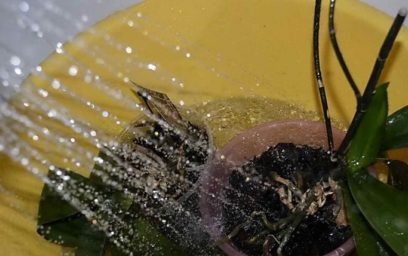 To control pests, use a shower for the plant. Treat with warm water under pressure. If the lesion is large, it is recommended to use pesticides.
To control pests, use a shower for the plant. Treat with warm water under pressure. If the lesion is large, it is recommended to use pesticides.
In winter, the plant feels good in a cool place with a temperature of no more than 19 degrees.Sunlight should be enough to prevent the flower from falling asleep.
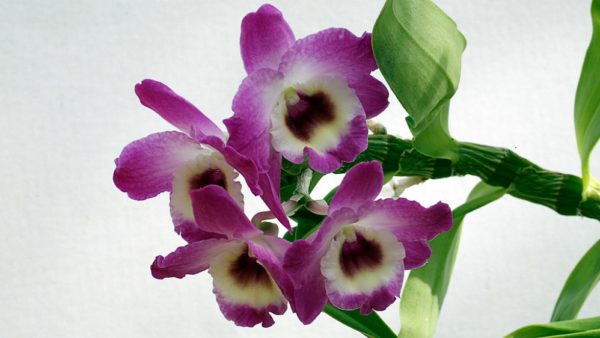 You may be interested in:
You may be interested in:Reviews
People growing orchids leave feedback in which they share their impressions.
Natalia, 28 years old.
I bought an orchid in the nursery, after lush flowering I began to die, I had to buy specialized literature and learn about the plant. I understood how to conduct care after flowering and now this beauty pleases the eyes of the whole family. They took a hybrid look, beautiful red large flowers. I am delighted. I advise everyone to take a closer look at these orchids, it’s a pity that there are no blue ones.
Svetlana, 36 years old.
The first time I saw Nobile, when she was relaxing with her husband in India. Returning to the country, I immediately went to the greenhouses, looking for the most similar to the original. Found it. Blooms sprawling, many inflorescences. I have a white orchid with a purple. It looks like the original. From this year I start to breed. I tried breeding with cuttings. It’s difficult but fun to work with orchids.
Nadezhda, 39 years old.
I have been doing orchids for a long time. In my collection there are many different varieties and not so long ago took up breeding noble. Care and reproduction at home is an activity for mothers with children. After flowering, the Nobile needs a break, otherwise it is capricious and will not bloom. But I like to deal with flowers. You give strength and get a beautiful bouquet of flowers.
Dendrobium nobile and its hybrids take root in urban apartments with quality care. Care should begin from the moment the plant appears in the house.

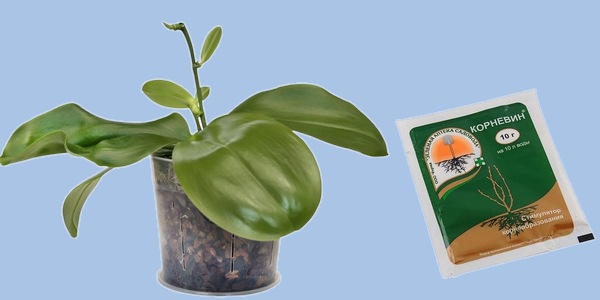
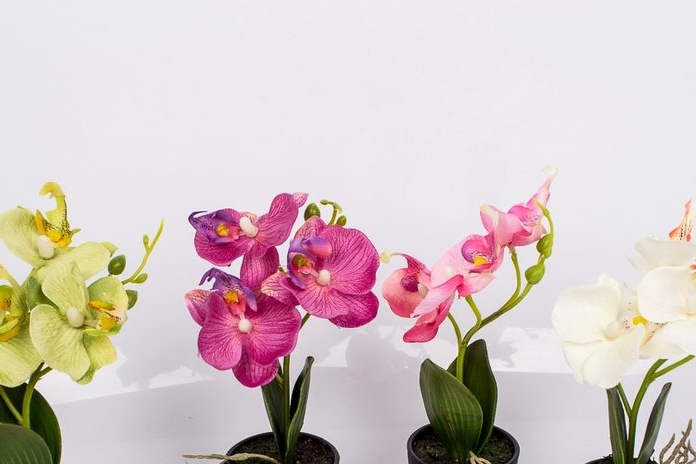
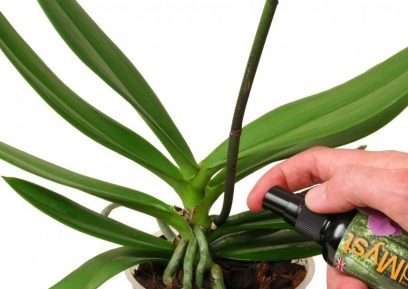
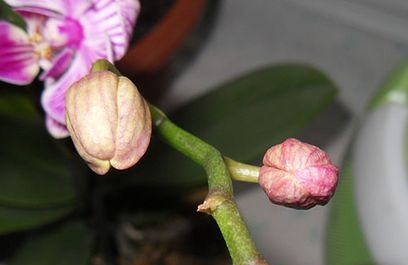 Reasons why orchids fall flowers and what to do
Reasons why orchids fall flowers and what to do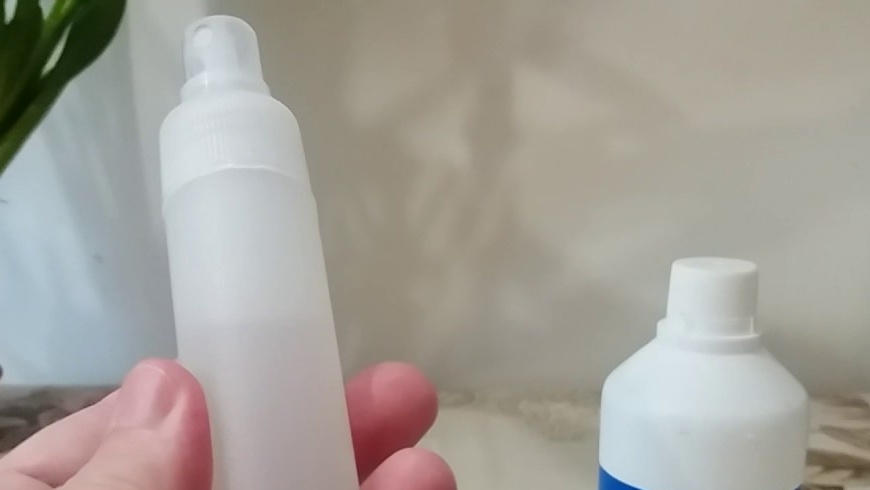 How to use hydrogen peroxide for orchids and why
How to use hydrogen peroxide for orchids and why Midges are wound up in the orchid: effective ways to get rid
Midges are wound up in the orchid: effective ways to get rid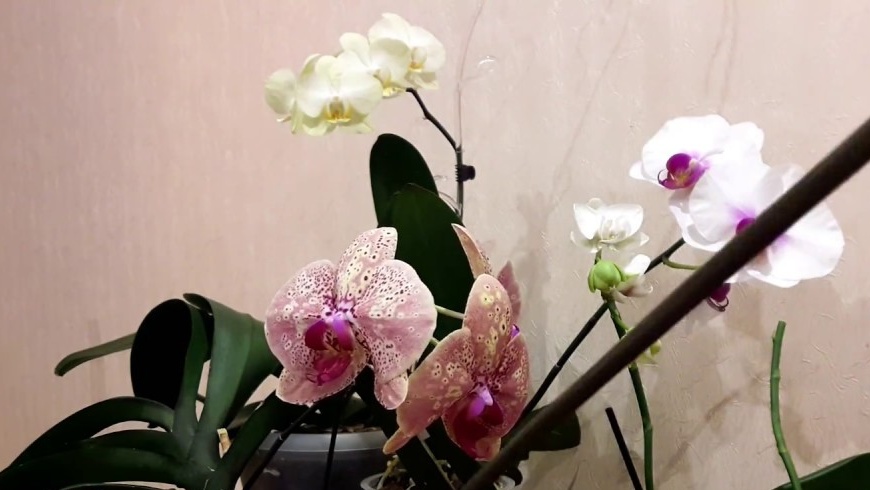 Is it possible to transplant an orchid during flowering
Is it possible to transplant an orchid during flowering